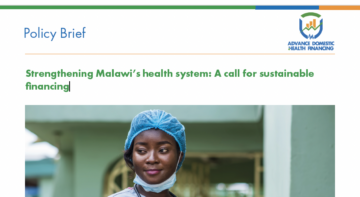
Cervical cancer is a major public health problem that kills approximately 250,000 women globally every year. It especially affects women in low-income countries. Low-income countries accounted for 370 000 out of a total of 466 000 cases that were estimated to occur in the world in 2000. It is the third most common cancer worldwide and the leading cause of cancer death among women. Malawi has the highest rate of cervical cancer worldwide, estimated at 75.9 per 100,000 population. It is the second common cancer overall (25.4 percent) of all cancers in the country and the most common (45.4 percent) cancer among women in Malawi. The high rates of cervical cancer are linked to high prevalence of Human Papiloma Virus (HPV) infection, HIV and a non-performing screening programme. This policy brief further discusses the epidemiology of cervical cancer, the policy options that hold potential for reducing its prevalence and draws on these options to make recommendations.
Related Publications





